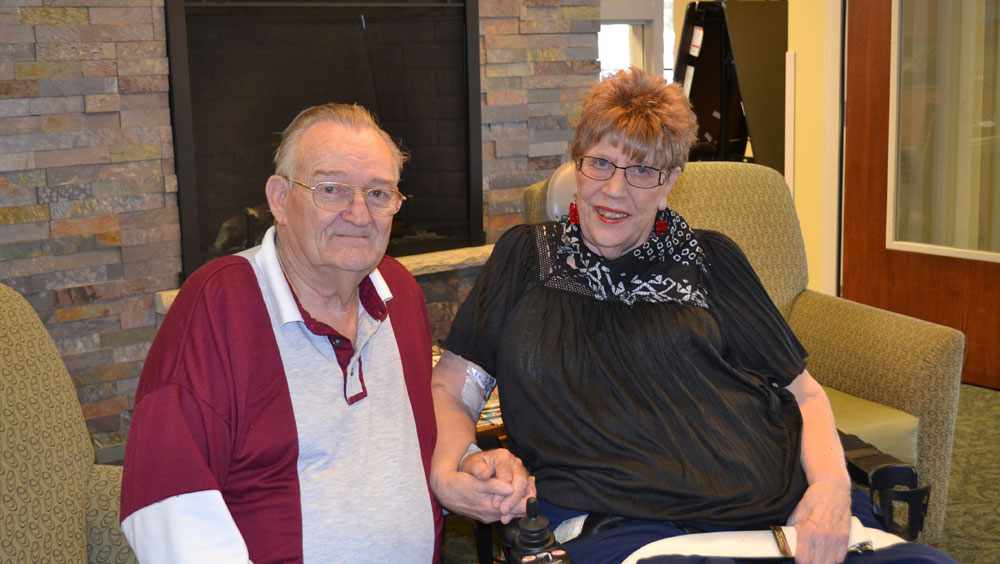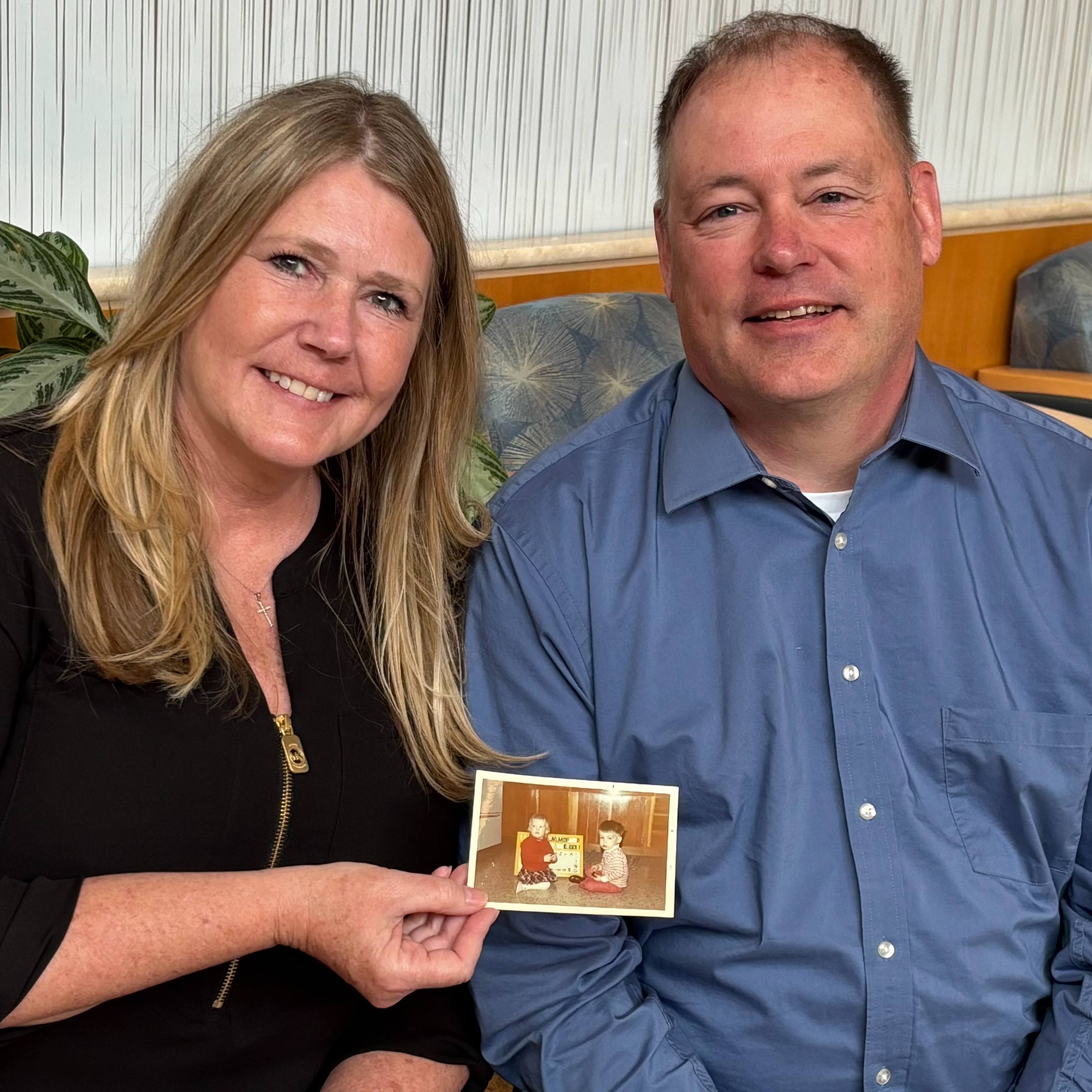-
West Nile Put Gloria Johnson on a Ventilator. Rehab Brings Her Back
 Gloria Johnson’s life changed in the blink of an eye.
Gloria Johnson’s life changed in the blink of an eye.
Gloria and her husband, Floyd, were camping in South Dakota in August 2013, when her body’s temperature skyrocketed to 104.6 degrees, and her body went limp. She went from enjoying her time at a campground to being paralyzed from the neck down.
She was diagnosed with West Nile virus, which is transmitted by mosquitoes.
Most people infected with West Nile virus experience a slight fever or a mild headache. Gloria was in the minority – less than one percent – of people affected neurologically by the virus. She ended up being admitted to an intensive care unit at Mayo Clinic's Rochester campus. Because of her paralysis, Gloria needed a ventilator to breathe.
As she began to recover and no longer needed the tertiary level of care provided by Mayo Clinic's intensive care unit, Gloria's care team recommended she continue to receive care at Mayo Clinic Health System’s care center in nearby Lake City, Minnesota. Lake City has the specialized equipment and staff with advanced training to care for the extensive needs of ventilator patients as part of the Mayo Post-Acute Care Program.
“We have all providers and nursing staff complete basic ventilator training, as well as 20 nurses and nursing assistants who have completed advanced ventilator training," says Jackie Ryan-Lodermeier, Administration. "They not only offer great clinical care with excellent outcomes, but also a great deal of kindness and compassion.”
Gloria agrees, saying she was “cared for around the clock by a staff that truly cares about me as a person. All of the personal touches and people going out of their way for me throughout my stay are the ones I will remember forever.”
During her six-month stay at the Lake Center care center in 2014, Gloria spent countless hours with physical, occupational, speech and respiratory therapists. Eventually, she regained enough strength and breathing function to be able to be liberated from the ventilator.
Gloria credits much of her success to Jeff Appelquist, Respiratory Therapy. “He worked with me every day, so we could get to the point of removing the ventilator permanently. During the second week I was off of the vent for two to three hours per day, and, by the third week, I was already up to 15 to 16 hours per day,” she recalls. “Jeff is a very special man. He has always taken the time to explain everything we are doing, and when things don’t go quite right, laughed with me.”
While not every patient can be liberated from a ventilator, Lake City’s vent program has been successful with patients who meet the appropriate criteria.
HELPFUL LINKS
- Learn more about West Nile virus.
- Learn more about Mayo Clinic Health System.
- Join a conversation about your health on Mayo Clinic Connect.
- Request an appointment.







